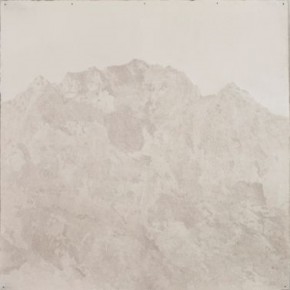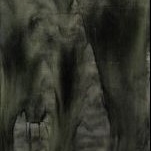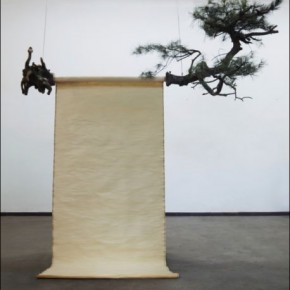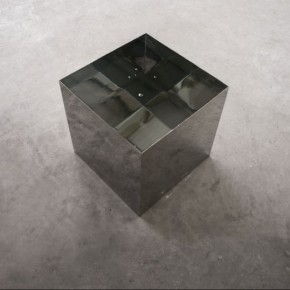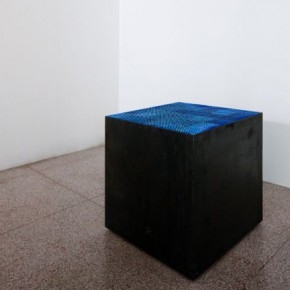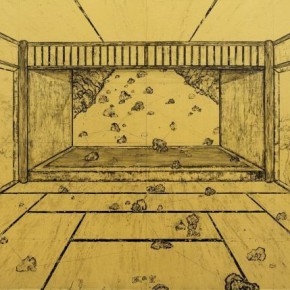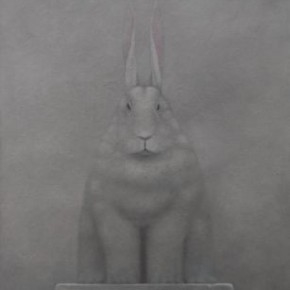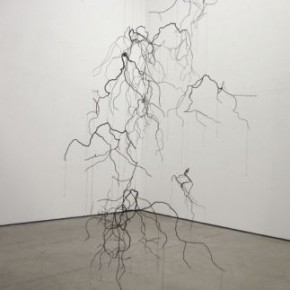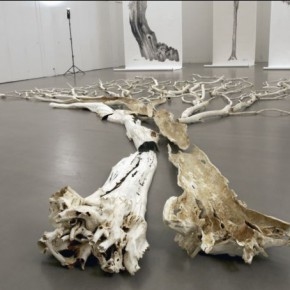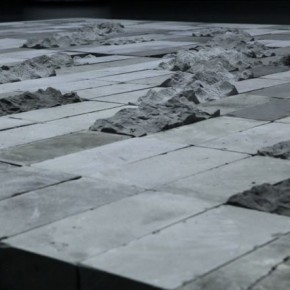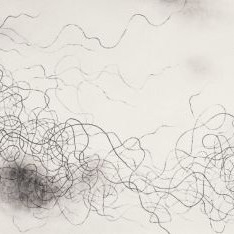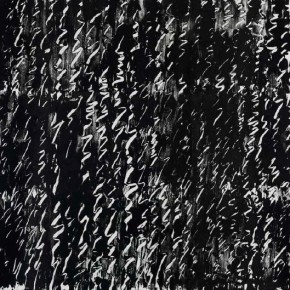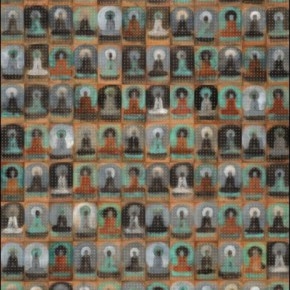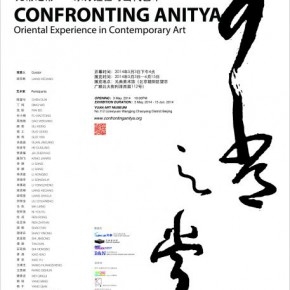
Before the Opium War of the 1840s, China has a large, whole civilization just like Europe, with its own storied culture and arts. The different philosophy, language and ways of life in China gave rise to an artistic tradition with aesthetic ideas and artistic patterns that differed from those of the West. After being defeated by the West, a civilization that had already undergone an industrial revolution, China began to study the West on a grand scale. The century-long process of modernization led to the constant discarding and breaking of traditions. The modernization process of Chinese art was beset with the same problems and predicaments, particularly with the Chinese contemporary art system, which, over three decades of development, was constructed entirely according to the decisions that had been made by the Western art world based on the threads and standards of its own art history. Many Chinese artists who studied Western realism, Pop art, the kitsch trappings of consumer society, artists who used the political and visual legacy of Socialism to engage in artistic creation, won acclaim and recognition in the international art world, in turn enjoying great success on the art market. This situation brought about two problems. First, many artists, attracted by this success, began to constantly copy this creative model. Second, the international art world came to see those works, full of Mao portraits, Red Guards and base consumer tastes, as the main body of Chinese contemporary art, while the value of the traditions and unique philosophical and aesthetic ideas that formed in over three thousand years of Chinese civilization never emerged in these artistic patterns.
The predicament facing the modern transformation of Chinese society is that the values espoused by Chinese culture, such as the Dao of nature and ambiguous control models which allow for flexibility and room to maneuver, are contradictory with modern Western society’s emphasis on rules, restraints, order and consensus. China began learning from the West after the Opium War, and art is no exception. It its current state of development, Chinese art is now facing the question of how to reconcile the traditional literati mindset of retreat into nature with the public appeal for social intervention and criticism of reality emphasized in contemporary art in order to complete an effective contemporary transition. In the three decades since it first arose, Chinese contemporary art has closely studied the various schools of artistic thought that have emerged in Western modernism. It has been twenty years since the first Chinese artists attended the Venice Biennale in 1993. Now, many Chinese contemporary artists are adept at using the concepts and language popular in international contemporary art to express the Chinese reality, and some artists have employed signs and implements from Chinese contemporary culture to engage in contemporary art creation, earning broad recognition in the Western art world. Meanwhile, there is a growing consensus and desire in the Chinese contemporary art scene to truly excavate the spirit and soul of Chinese traditional culture and to engage in a contemporary transformation in order to provide new expressive methods and linguistic innovations. Unfortunately, artworks that do this well have been few and far between, and such artworks have had little opportunity to be understood and noticed in the international art scene.
This exhibition is based on the curator’s in-depth research and investigation over many years to seek out outstanding artists who have been gravely overlooked. These artists are not willing to simply copy the artistic trends and styles of the West. They prefer to seek out valuable ideas and resources for creative transformation from within their own rich cultural traditions in hopes of contributing different values and views. Confronting Anitya presents the international art world with the recent works of serious Chinese contemporary artists who are steeped in Eastern traditional culture and refuse to follow the fads of the times or simply copy the West. These works represent a serious effort among artists in recent years to link the essence of Eastern traditional culture with contemporary artistic expression. Their remarkable achievements are often outshined in the Chinese art scene by the stars of the market, and they were once relegated to the margins of art history by their oversimplified designation as “native school artists” under the model of Western modern and contemporary art history. Now we present the efforts of these outstanding artists on the worldwide stage in hopes of providing this calamitous international contemporary art scene with a calm, peaceful, elegant and profound alternative.
When this exhibition was first presented in Biennale Venice last year, it attracted much attention and praise, which is highly praised by the international critics. It was then shown in the biggest private museum of Bologna, MAGI900. Afterwards, it went toBonn and cooperated with the foundation for art and culture in Kunstraum Villa Friede in the March of this year. This is also the first time the art exhibition was presented by Chinese curator and critic in aim to explore Chinese own creation based on their in-dept research and self-understanding. Ever before, there were only the western critics, curators and collectors to produce the whole show about China. This exhibition will continue show in Europe for this year, where it touched off a series of discussions about the possible futures for contemporary art among international critics. And this is the first time we bring this show back to China and following will have more chances to meet the Chinese audience in different cities. We are looking forward to achieve the attention among them and bring a new artistic trend taking place in China today.
About the exhibition
Duration: May 3, 2014 - Jun 15, 2014
Opening: May 3, 2014, 16:00, Saturday
Venue: Yuan Art Museum (Beijing, China)
Curator: Liang Kegang
Artists: Chen Duxi, Ding Wei, Fan Bo, Fu Xiaotong, Gao Weigang, Gu Xiong, Guan Jingjing, Guo Gong, Guo Yan, He Duoling, Jia Zhenyao, Kang Jianfei, Li Gang, Li Gang, Li Songhua, Li Hongbo, Li Yongzheng, Liang Kegang, Liang Shaoji, Liu Zhuanbao, Ma Maleonn, Ni Youyu, Ren Zhitian, Ren Rong, Shao Yinong, Shao Fan, Shi Jinsong, Shi Hengba, Tan Xun, Wang Sishun, Wang Huangsheng, Wei Qingji, Xiao Yu, Xiao Xiao, Yang Ming, Yang Qian, You Liangcheng, Yu Fan, Zhang Fan, Zhang Yanzi
Tiantai Art Museum (Qingdao, China)
Yuan Art Museum (Beijing, China)
Courtesy of the artists and Yuan Art Museum.


